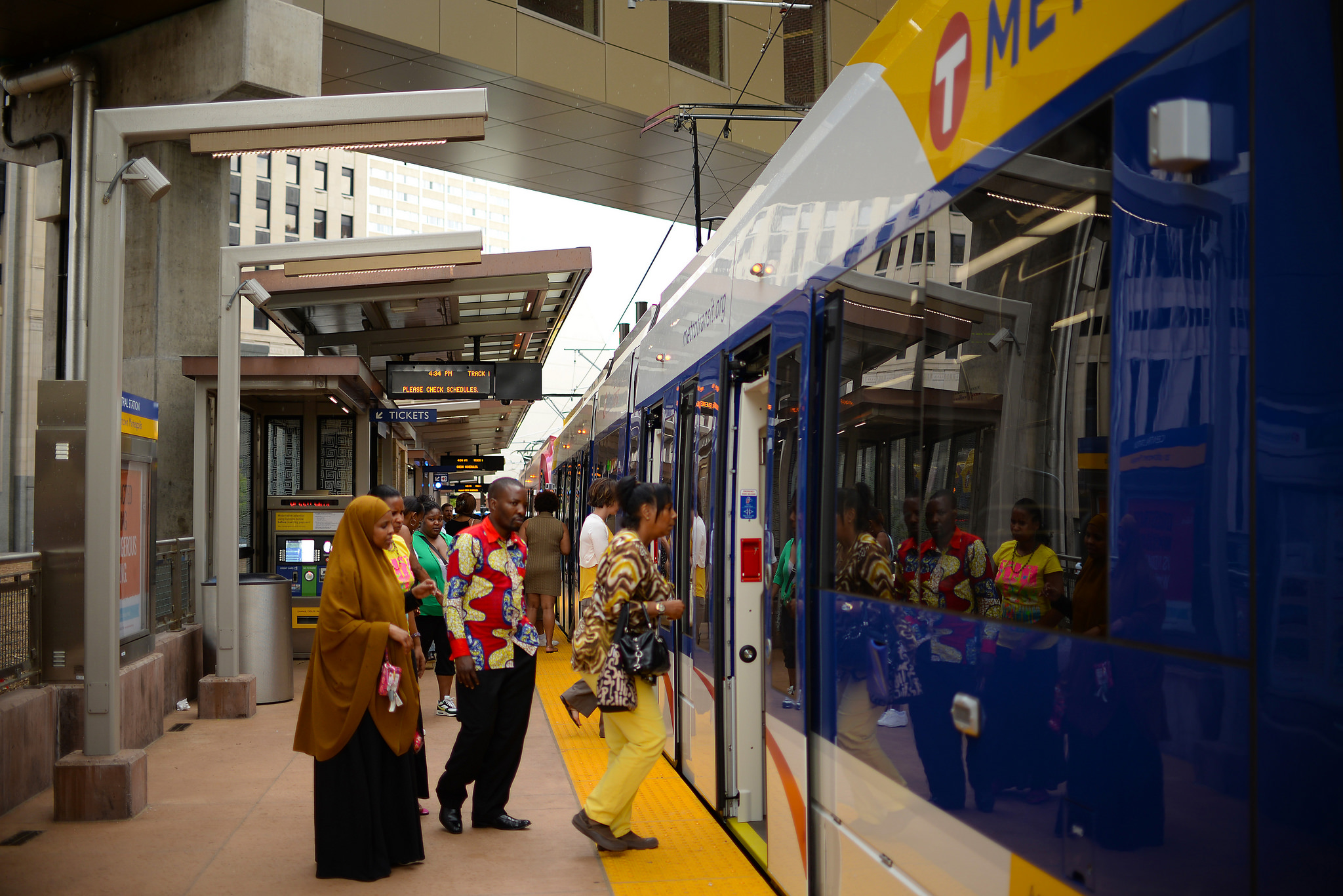 Strong and growing ridership is the hallmark of the METRO Green Line’s first six-months of operation.
Strong and growing ridership is the hallmark of the METRO Green Line’s first six-months of operation.
Customers have taken about 6 million rides since service began on June 14, including more than 1 million rides in both September and October. Average weekday ridership in November was 36,240, near the 2030 projection of 41,000 rides.
“The community response to the Green Line is even better than we imagined,” Metro Transit General Manager Brian Lamb said. “In less than one year of operation, the Green Line has clearly had a major impact on the way people get around, interact with and enjoy the Twin Cities.”
Combined ridership on the Green Line and routes 16 and 94, which also serve the Central Corridor, has nearly doubled from last year. The Green Line replaced limited-stop Route 50 that ran on University Avenue and service was enhanced on several routes that connect with Green Line stations.
The most popular stops have been East Bank Station, in the center of the University of Minnesota campus, and Nicollet Mall Station in downtown Minneapolis. Stadium Village Station, near TCF Bank Stadium, has also become a hub of activity on gamedays. Around 25 percent of Minnesota Vikings fans took the Green Line to and from the game this season, double the ridership from previous years.
Combined with other rail and bus service, the Green Line is expected to drive Metro Transit’s total year-end ridership to around 84 million, the highest it has been since 1981.
In addition to strong ridership, the first six months of Green Line service are noteworthy for the focus on public safety, enhanced performance and community development.
Metro Transit continued to educate pedestrians, motorists and others about light rail safety through presentations and a robust marketing campaign, including a billboard on University Avenue.
Transit Police hired 22 new officers to patrol the Green Line and the neighborhoods it serves. Transit Police say there has been no significant change in crime along the corridor since the Green Line opened.
Light-rail operations have also improved through coordination with local partners. Technology called predictive priority has been successfully implemented at 18 low-volume intersections along the Green Line corridor. Predictive priority gives trains their best chance of getting a green light, reducing the amount of time trains spend waiting at signalized intersections.
Transit-oriented development has also continued along the corridor.
Project for Pride in Living started construction in August on its 108-unit Hamline Station Project, which replaces a vacant auto dealership immediately north of the Hamline Avenue Station. On Dec. 19, Surly Brewing Co. will open its new beer hall just east of the Prospect Park Station.
In November, seniors began moving into The Terrace at Iris Park at Episcopal Homes’ new Midway Village development immediately south of the Fairview Avenue Station. In December, move-ins began at Midway Pointe, the second of three new residences at Midway Village. The third residence, Episcopal Church Home – The Gardens, will be ready for occupancy in January 2015.
Residents of the entire campus began using light-rail as soon as it opened, CEO Marvin Plakut said.
“Interest in our community increased even before the Green Line’s opening and continues to grow now that the service is up and running,” Plakut said. “People are excited by the freedom that waits right outside their door. Episcopal Homes is the only senior community that can offer it.”
> New York Times: Despite cheaper gas, public transit ridership is up
> Explore the Twin Cities using our Green Line A to Z guide
> Green Line tops 1 million rides, again